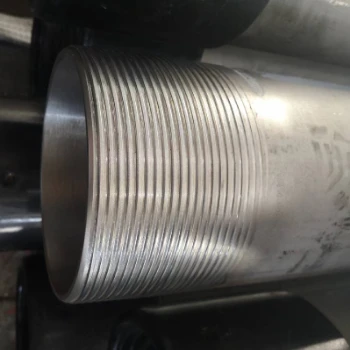- Afrikaans
- Albanian
- Amharic
- Arabic
- Armenian
- Azerbaijani
- Basque
- Belarusian
- Bengali
- Bosnian
- Bulgarian
- Catalan
- Cebuano
- Corsican
- Croatian
- Czech
- Danish
- Dutch
- English
- Esperanto
- Estonian
- Finnish
- French
- Frisian
- Galician
- Georgian
- German
- Greek
- Gujarati
- Haitian Creole
- hausa
- hawaiian
- Hebrew
- Hindi
- Miao
- Hungarian
- Icelandic
- igbo
- Indonesian
- irish
- Italian
- Japanese
- Javanese
- Kannada
- kazakh
- Khmer
- Rwandese
- Korean
- Kurdish
- Kyrgyz
- Lao
- Latin
- Latvian
- Lithuanian
- Luxembourgish
- Macedonian
- Malgashi
- Malay
- Malayalam
- Maltese
- Maori
- Marathi
- Mongolian
- Myanmar
- Nepali
- Norwegian
- Norwegian
- Occitan
- Pashto
- Persian
- Polish
- Portuguese
- Punjabi
- Romanian
- Russian
- Samoan
- Scottish Gaelic
- Serbian
- Sesotho
- Shona
- Sindhi
- Sinhala
- Slovak
- Slovenian
- Somali
- Spanish
- Sundanese
- Swahili
- Swedish
- Tagalog
- Tajik
- Tamil
- Tatar
- Telugu
- Thai
- Turkish
- Turkmen
- Ukrainian
- Urdu
- Uighur
- Uzbek
- Vietnamese
- Welsh
- Bantu
- Yiddish
- Yoruba
- Zulu
casing and tubing connections
Understanding Casing and Tubing Connections in Oil and Gas Operations
In the oil and gas industry, the extraction of hydrocarbons from the earth involves complex processes, and one of the most critical aspects of these operations is the use of casing and tubing. These components are essential for maintaining the integrity of the wellbore and ensuring safe and efficient production. This article explores the significance of casing and tubing connections, the types available, and the technologies enhancing their performance.
What are Casing and Tubing?
Casing is a series of pipes installed in a drilled well to stabilize the wellbore, prevent the collapse of the formation, and protect fresh water aquifers from contamination. Casing is typically cemented in place to anchor it securely and isolate different geological formations. Tubing, on the other hand, is the pipe used to transport the produced hydrocarbons from the well to the surface. It is inserted into the casing and is crucial for the flow of oil and gas.
Types of Casing
There are several types of casing used in drilling, each serving a specific purpose
1. Surface Casing This is the first layer of casing installed in a well, providing a protective barrier to prevent contaminants from entering groundwater and ensuring well integrity during drilling operations.
2. Intermediate Casing Installed after surface casing, this type is used to protect the wellbore from high-pressure zones and unstable formations, providing additional structural support.
3. Production Casing This casing is set in the section of the well where production occurs. It allows the well to flow freely while still maintaining the stability and integrity of the surrounding formations.
Types of Tubing
Tubing comes in various sizes and materials, depending on the specific application. The primary functions of tubing include carrying hydrocarbons to the surface and facilitating the injection of fluids. Types of tubing include
1. Production Tubing This is the primary pipe used for the production of oil and gas. Production tubing is designed to handle high pressure and temperature while providing the necessary flow capacity.
casing and tubing connections

Connections Matter
The connections between casing and tubing are fundamental to the safety and effectiveness of oil and gas operations. These connections can be either threaded or welded, with each type offering its advantages.
- Threaded Connections Common in many operations, threaded connections allow for easy assembly and disassembly. However, they may be more prone to failure under extreme conditions.
- Welded Connections While more robust and capable of handling higher pressures, welded connections are permanent and require proper techniques and equipment to ensure quality.
To enhance the performance and reliability of these connections, advancements in technology have introduced various innovative solutions such as
1. Custom Joint Designs Tailoring connections to specific operational requirements can improve their strength and resistance to wear and tear.
2. Non-destructive Testing (NDT) Techniques such as ultrasonic testing can detect defects in casing and tubing connections before they lead to failure, ensuring maximum safety.
3. Corrosion Resistance Coatings and materials engineered to resist corrosion can prolong the life of tubing and casing, reducing maintenance costs and downtime.
Conclusion
Casing and tubing connections are vital components of oil and gas operations, influencing everything from safety to production efficiency. Understanding the types, uses, and technologies associated with these connections is crucial for industry professionals. As exploration and extraction techniques advance, ongoing innovations in casing and tubing technologies will likely play a significant role in optimizing hydrocarbon recovery and ensuring environmental protection. Ultimately, the ability to maintain well integrity while maximizing production depends heavily on the reliability of casing and tubing connections in the ever-evolving landscape of the oil and gas sector.
-
Tubing Pup Joints: Essential Components for Oil and Gas OperationsNewsJul.10,2025
-
Pup Joints: Essential Components for Reliable Drilling OperationsNewsJul.10,2025
-
Pipe Couplings: Connecting Your World EfficientlyNewsJul.10,2025
-
Mastering Oilfield Operations with Quality Tubing and CasingNewsJul.10,2025
-
High-Quality Casing Couplings for Every NeedNewsJul.10,2025
-
Boost Your Drilling Efficiency with Premium Crossover Tools & Seating NipplesNewsJul.10,2025







